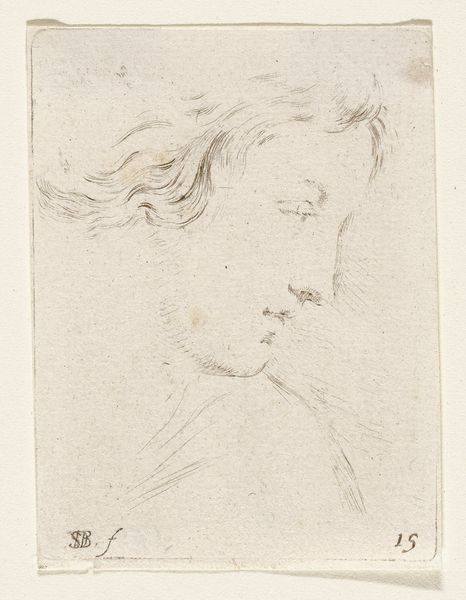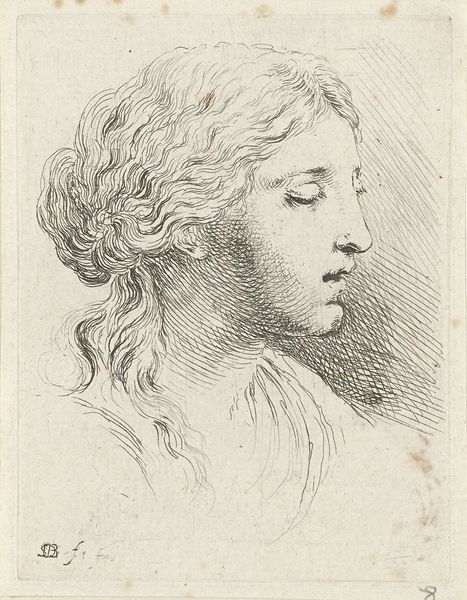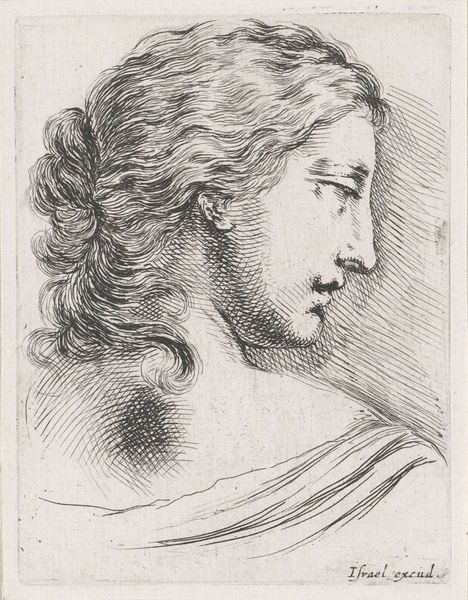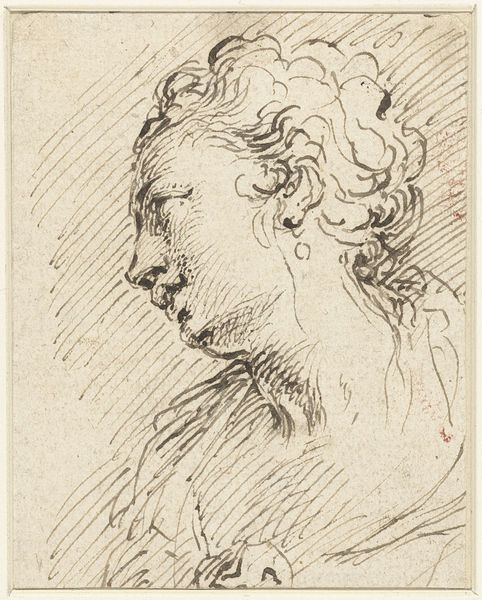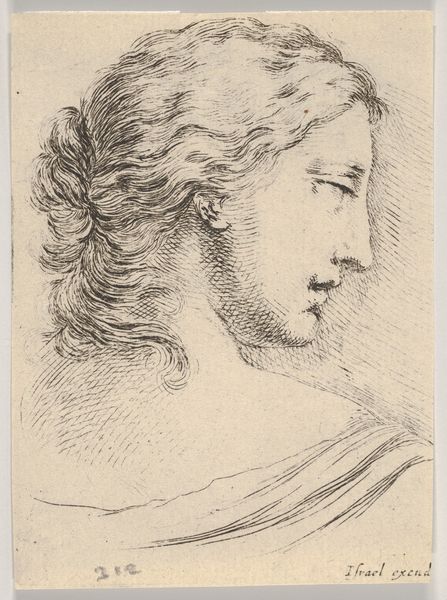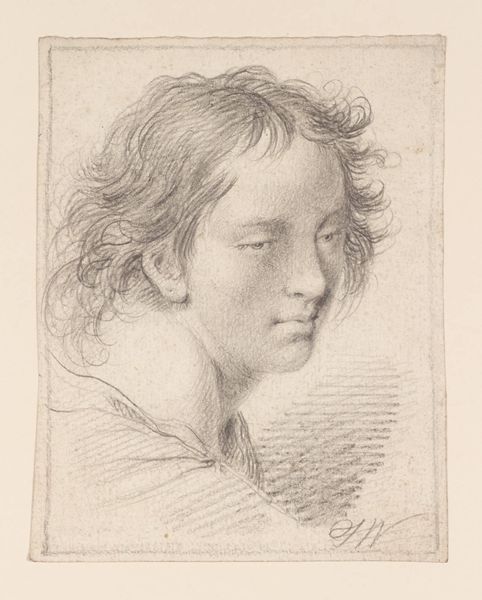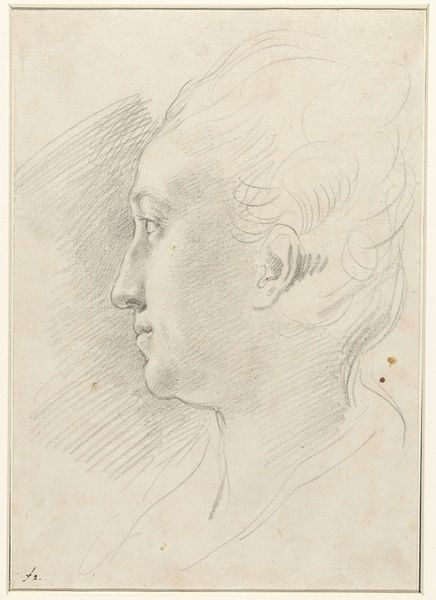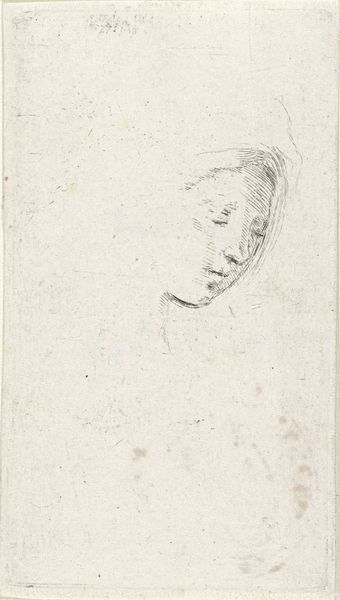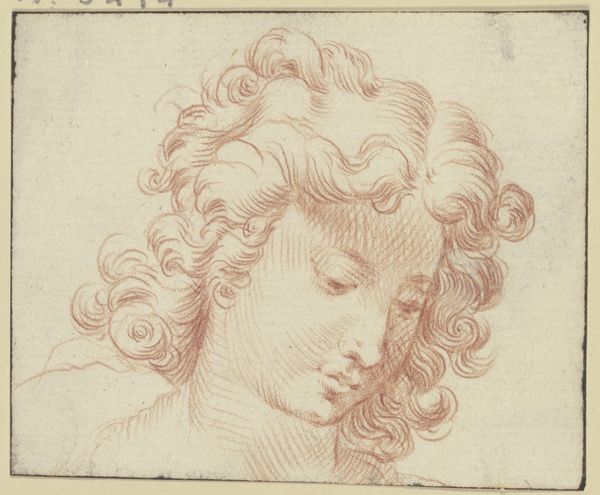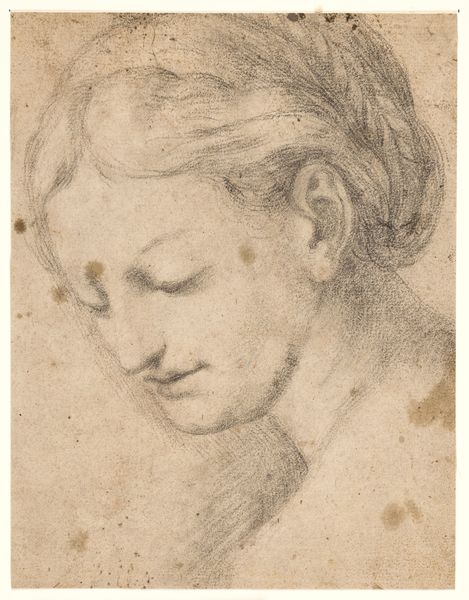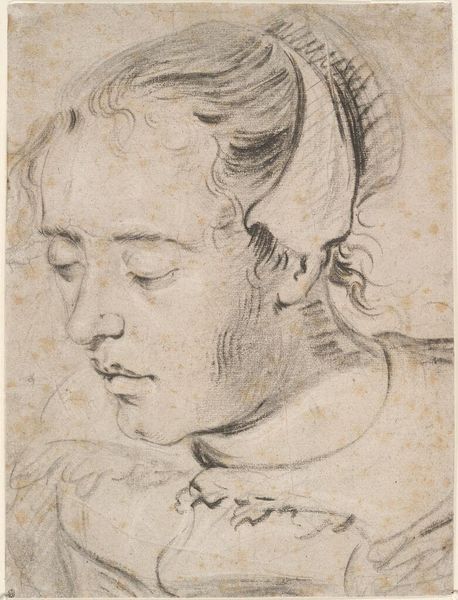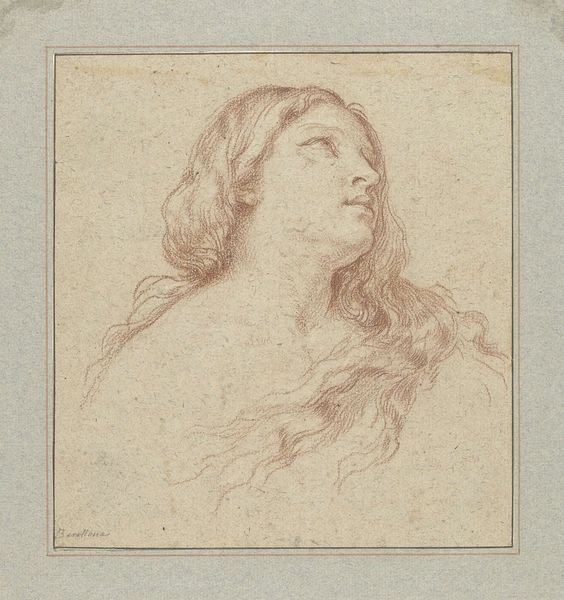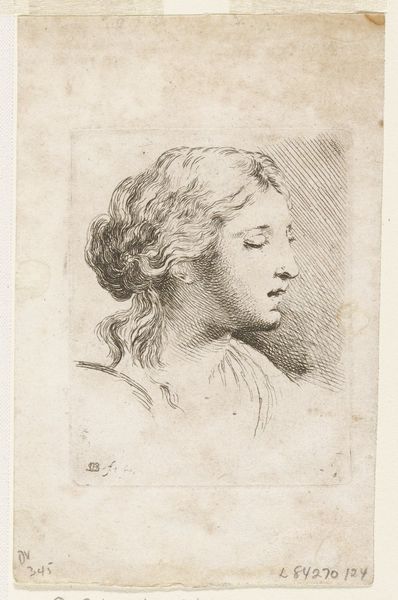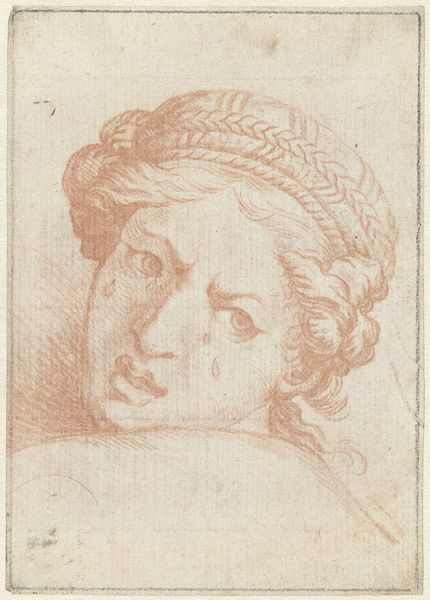
Hoofd van vrouw, over haar schouder naar rechts kijkend 1620 - 1647
0:00
0:00
drawing, paper, ink
#
portrait
#
pencil drawn
#
drawing
#
facial expression drawing
#
mannerism
#
figuration
#
paper
#
ink
#
pencil drawing
#
line
#
portrait drawing
#
profile
Dimensions: height 84 mm, width 64 mm
Copyright: Rijks Museum: Open Domain
Curator: Here in Gallery 210, we have "Head of a Woman, Looking Right, Over Her Shoulder," a drawing executed in ink on paper by Stefano della Bella. It’s dated sometime between 1620 and 1647. Editor: It’s quite haunting, isn't it? The delicate lines create such a pensive mood. The slight tilt of her head and downcast eyes – there’s a quiet melancholy there. Curator: Della Bella was a master of line, and this drawing showcases his skill beautifully. Notice the economic use of hatching to define the forms, creating a sense of volume and shadow with such minimal means. But consider the social context: drawings like this served as studies, models for larger works, often disseminated as prints, impacting artistic practices across Europe. Editor: Yes, but beyond its utility, the line itself speaks volumes. The way it captures the texture of her hair, for instance. Or how the varying pressure conveys depth and contour, lending such elegance to the female form. I’m captivated by the economy and grace of his structural approach. Curator: Certainly. Della Bella, coming out of a Mannerist tradition, sought a balance between naturalism and idealized form. Prints made his art accessible, feeding a growing market and influencing workshop practices. We should also remember the importance of paper at this time, a precious commodity that dictated the scale and preservation of such works. Editor: I’m more concerned with the artwork’s visual architecture, and find your focus somewhat reductive. I find more significance in the curve of the neck, the shadow along her jaw. The artist's mastery transcends material conditions; it lives in the intentional deployment of line. It almost speaks to the nature of being seen, with her both acknowledging the gaze, while existing independent of it. Curator: True, there’s that compelling ambiguity. It is a fine thing to experience an aesthetic reaction – so the piece works on multiple levels: material, social and the purely visual. Editor: Indeed, a dialogue between the world and its depiction. Curator: And a captivating example of drawing's vital role within larger systems of artistic production and circulation.
Comments
No comments
Be the first to comment and join the conversation on the ultimate creative platform.
